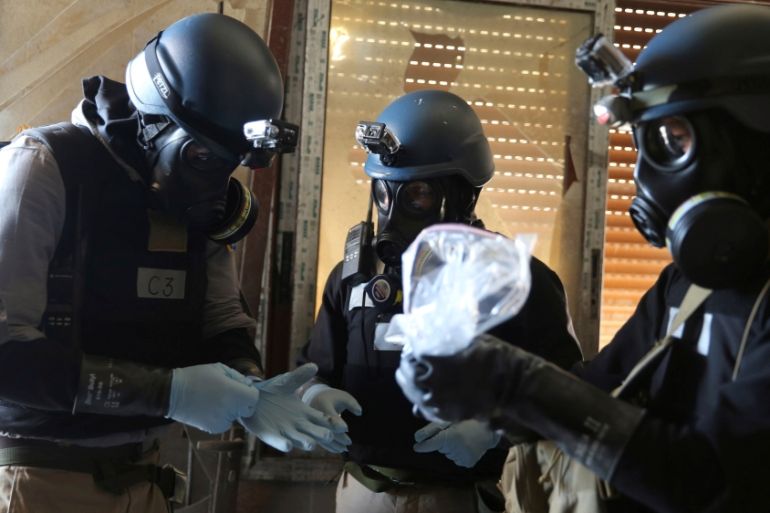From chlorine to sarin: Chemical weapons in war
A list of the chemical weapons in use and the harm they cause.

Chemical and biological weapons were first used during World War I.
Amid widespread outrage, the Geneva Protocol in 1925 banned their use, but did not prohibit the development, production or stockpiling of such weapons.
In 1975, the Biological Weapons Convention came into force, expanding on the Geneva Protocol to ban “the development, production and stockpiling of an entire category of weapons of mass destruction”.
The two treaties were further reinforced by the Chemical Weapons Convention in 1993.
READ MORE: Autopsy ‘shows chemical weapons used in Syria attack’
While the use of chemical and biological agents has been rare since World War I, in recent years the Syrian government and Islamic State of Iraq and the Levant (ISIL, also known as ISIS) have been accused of using such weapons as a tool in the six-year-old war.
Most recently, the Syrian government was accused of using chemical weapons on a rebel-held town in Syria’s Idlib province, killing more than 80 people and wounding hundreds more. The Syrian government has denied the accusation.
Below is a list of chemical weapons that the Organisation for the Prohibitions of Chemical Weapons says are in use and the harm they cause:

